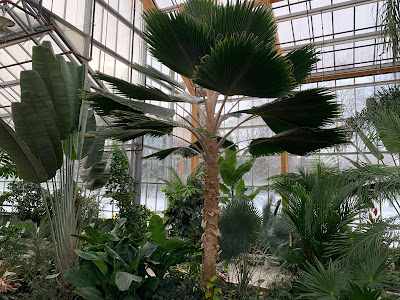Solid as Stone
March 27, 2020
Kathy Renwald
When potter Scott Barnim
moved in to his 1860’s Dundas home, it was already in an altered state.
Way back in 1899 the ground floor of the
stately Georgian stone house was peeled away to make room for a carriage shed
and a stable. Horses on the ground floor, and people on the second.
From the time Walter Chisholm built the house
and became the first town clerk of Dundas, it was occupied by movers and
shakers. After Chisholm, the successful
Laing family moved in, builders of the Laing block on King Street. At the turn of the century the Grafton's
owned it, their successful businesses employed 400 people. When Tom Folkes settled in around 1927 he ran
a busy riding academy.
Now the equally industrious Barnim is
retooling the house for his needs.
“I work a lot,” he says from the sales shop located
where the carriages used to park, “At least 40 hours and more a week.”
Usually he would have a student assistant,
now in these Covid times, the work is solo.
His pieces, domestic and useable as he
describes them, fill shelves, tables, and walls in the shop. It’s closed
now, but the business is open for porch
pickup and shipping.
From the 1970’s he’s been constantly
producing, but his work found its feet after a placement in a masters ceramic
program in Cardiff Wales.
A professor said to him, “You’re a craft
potter, don’t let people pick on you for that.”
Barnim was instructed to go out with a sketchbook and draw things he
loved.
“I had to learn to decorate, I sketched the
fish at the market, their shapes and
pattern, that ended up on my pottery.”
Barnim’s intrinsic feel for shape and texture
was squeezed for all its worth in his recent reimagining of his heritage home.
He turned the 2,000 square foot main living space into an academic rental, and
he moved into the hayloft.
At 450 square feet, the hayloft-apartment is
packed with charm. It has a tiny bedroom, and a tinier kitchen, and a living
space where each stick of furniture needs to earn its keep.
“The Welsh dresser is where I put the pieces
I need to set the table,” Barnim says.
During the redesign, Barnim worked with his
longtime friend, designer Phyllis Tresidder. They shopped for fabric and paint
and she advised on areas to highlight and areas to “paint out”.
To ready the rental apartment, Barnim worked
on the jobs inherited in an old house. Layers of linoleum coated with horse
hide glue, were pried off original red
pine floors. Plaster walls, held together with old wallpaper, needed rescue.
The work wasn’t daunting for Barnim.
“I’m good at that kind of
thing, I could have been a builder.”
A tour through the house is part art history
lesson, an antique roadshow, and family memories.
Barnim used his own pieces to furnish the
apartment. A table in the dining room is
the one where threshing crews ate at his grandparent’s farm, a quilt in the
hallway came from a trade with Burlington artist John Willard, the many
paintings reflect the talent of the Dundas artistic community.
Fully stocked, thoughtfully decorated, the
apartment is listed with McMaster University’s academical rental program.
“You can walk in with your backpack and have
a dinner party tomorrow night,” Barnim says.
The extra income of $2,500 a month is welcome,
and may help in a future project of restoring the front of the house to the original.
As the historical designation says it was
once a beautiful Georgian stone building.
“I’d love to put the house back,” Barnim says
just a bit wistfully.
Even as it is, framed by waving branches of
spruce and pine trees, it is a thing of beauty.
Here is a link to a You Tube video
Instagram:@kathyrenwald


















